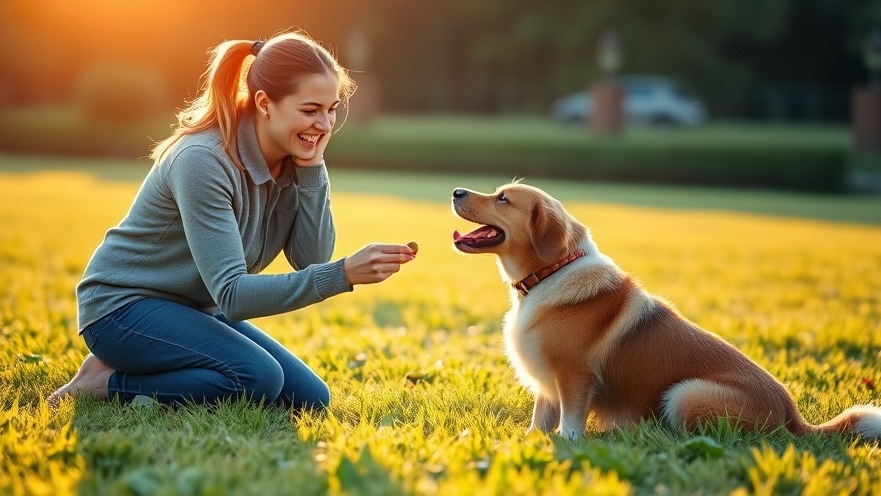
Understanding Effective Dog Training Practices
Training a dog has long been conceptualized as a process filled with commands, corrections, and plenty of discipline.
However, in the video Real dog trainers NEVER do this, we are urged to reconsider common practices seen in traditional dog training methods.
It reveals that the emphasis should instead be on building relationships and utilizing positive reinforcement techniques that appeal to a dog’s natural instincts and emotions.
Positive reinforcement works best when it’s applied consistently and correctly—especially when you know the common mistakes to avoid when training your dog.
In Real dog trainers NEVER do this, the discussion dives into the importance of trust and positive reinforcement in dog training, exploring key insights that inspired deeper analysis.
Distinguishing Between Traditional and Modern Training Techniques
While many trainers rely heavily on tools like choke chains or shock collars, these approaches can lead to fear and anxiety in dogs.
In contrast, positive reinforcement advocates for rewarding desired behaviors, strengthening the bond between the trainer and the pet.
Understanding and applying modern techniques leads not only to better-trained dogs but also happier pets who trust their owners—essentially making training a joyful experience for both parties.
The Importance of Building Trust
The core message in the video is about trust: real dog trainers never risk destroying that trust through harsh methods.
Instead, they prioritize communication, respect, and kindness to build a lasting relationship.
Using treats or praise to reinforce good behavior creates an environment where the dog feels safe and valued, making them eager to learn.
Emotional Bonds and Behavioral Success
Dogs are incredibly intuitive animals that thrive on emotional connections. By using positive reinforcement, trainers not only teach commands but also foster a secure attachment that improves overall behavior.
Emotional bonds can influence everything from a dog’s ability to learn complex tasks to its response to environmental stressors.
Actionable Insights for Dog Owners
To apply these insights in your training regimen, start by evaluating your current methods. Ask yourself whether your approach builds a connection or induces anxiety. Consider these actionable tips:
Always use positive reinforcement: Reward good behavior immediately with treats or praise.
Practice consistency: Ensure all family members use the same commands and rewards to avoid confusion.
Know your dog’s triggers: Understanding what excites or frightens your dog can guide training sessions.
Be patient: Progress takes time, and every dog learns at their own pace.
Common Misconceptions about Dog Training
Many dog owners believe that correction-based training is necessary for discipline. This misconception can lead to frustration on both ends.
The reality is that dogs learn much more effectively in an environment where they feel safe and loved, rather than fearful or anxious.
Positive reinforcement cultivates a learning atmosphere focused on rewards instead of punishments.
Bridging the Gap Between Owners and Dogs
As dog ownership continues to grow, it is crucial to recognize the significance of responsible training practices. The evolving understanding of canine behavior reinforces that effective training goes beyond obedience; it is about respect and empathy.
In recognizing the needs of our dogs—both physical and emotional—we are better equipped to nurture them and foster a deeper, more intuitive relationship.
Conclusion: A Call to Action for Responsible Training
Ultimately, dog training should be a collaborative effort, grounded in trust and understanding.
As you consider your training approach based on insights from the video Real dog trainers NEVER do this, remember that your relationship with your dog will determine not only their behavior but also their happiness.
Emphasize positive methods, cultivate trust, and transform training into a heartwarming journey of connection.
Take your training to the next level; consider engaging a professional who specializes in positive reinforcement methods for tailored guidance that strengthens your bond with your furry friend.
 Add Row
Add Row  Add
Add 





Write A Comment